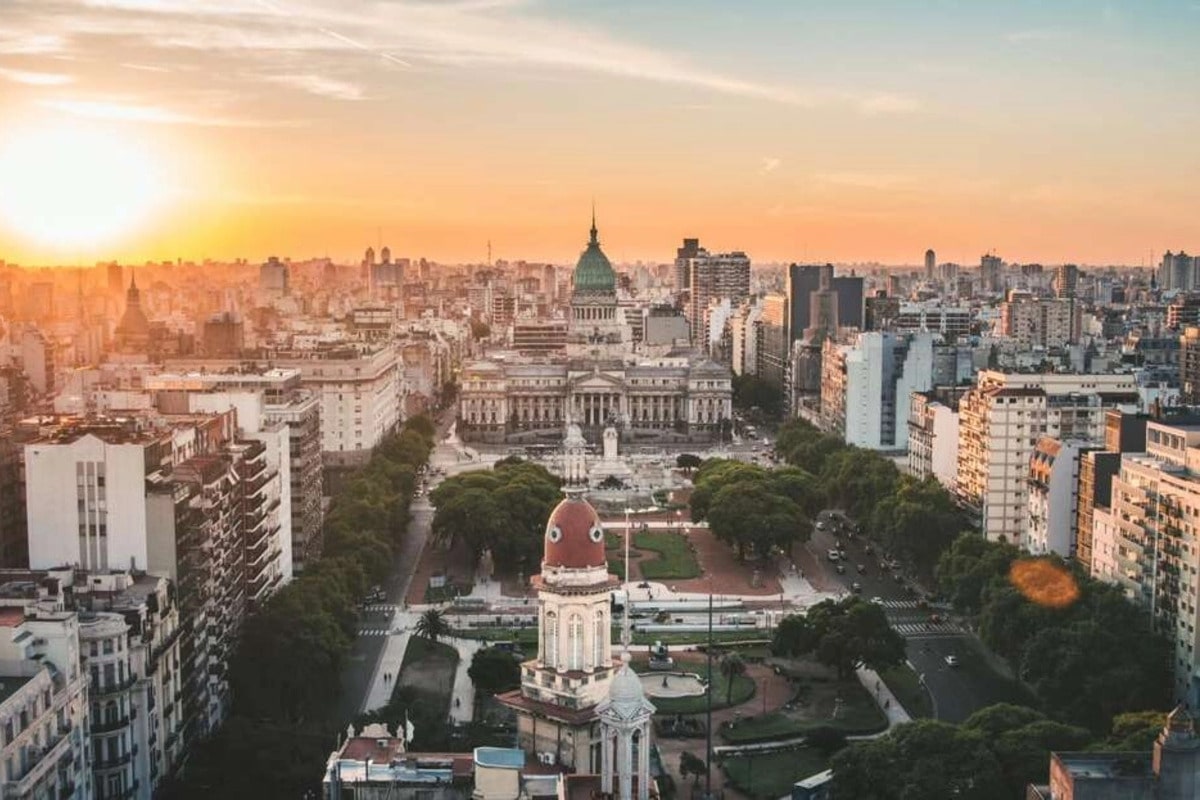Buenos Aires is one of the most fascinating cities in Latin America, blending European elegance with South American passion. It is not only the capital of Argentina but also a vibrant center of culture, art, and tradition. Music fills the streets, creativity thrives in every neighborhood, and history echoes through its architecture. It is a place where everyday life moves to the rhythm of tango, the aroma of coffee, and the color of street art. Here are some interesting facts about Buenos Aires that you may not have known.
- The name Buenos Aires means “fair winds” in Spanish. It was given by 16th-century sailors hoping for favorable weather conditions. The city’s original name was much longer and had a religious meaning. Over time, it was shortened to the familiar version known today.
- Buenos Aires does not belong to any Argentine province. It is an autonomous federal district with its own administration, similar to Washington, D.C. in the United States. This status was granted in 1880 after long political debates, allowing the national government to be centralized in the city.
- The city is home to over 300 theatres, making it a global capital of performing arts. The famous Teatro Colón is located here, considered one of the finest opera houses in the world. It ranks among the top five for acoustics and architectural beauty. Performing there is a great honor for any artist.
- Street art is an integral part of the urban landscape in Buenos Aires. Districts like Palermo, La Boca, and Villa Urquiza are filled with murals and graffiti masterpieces. Guided tours dedicated to this art form are available for visitors. Street art adds a unique creative spirit to the city.
- Buenos Aires is known as the birthplace of tango, the passionate Argentine dance. It originated in the poor neighborhoods as a mix of European, African, and local traditions. Every August, the city hosts a world-renowned tango festival attracting dancers from across the globe. There are many clubs where people can learn and enjoy the dance.
- One of the widest avenues in the world, Avenida 9 de Julio, runs through the city. In some sections, it reaches up to 16 lanes and stretches for several kilometers. It is named after Argentina’s Independence Day, July 9, 1816. The Obelisk, a city landmark, stands prominently along the avenue.
- Buenos Aires has one of the oldest metro systems in South America. It opened in 1913 and was the first subway on the continent. Some stations still preserve their original wooden and tiled decorations. The metro plays a vital role in daily urban transportation.
- Recoleta Cemetery is one of the most visited tourist attractions in the city. It is the final resting place of prominent figures such as Eva Perón, along with many artists and political leaders. The cemetery is known for its elaborate marble mausoleums and sculptures. Visitors often treat it as an open-air museum.
- The most famous bookstore in Argentina, El Ateneo Grand Splendid, is housed in a former theatre. It retains the original stage, balconies, and architectural details. The auditorium has been converted into book aisles, and the stage now hosts a café. It is frequently ranked among the most beautiful bookstores in the world.
- Buenos Aires is a paradise for coffee lovers. The café culture here goes beyond drinking coffee — people come to talk, read newspapers, and enjoy the atmosphere. Some cafés have been in operation for over a hundred years and maintain their historic interiors. Coffee is deeply woven into the city’s identity.
- The city has one of the largest Jewish communities in Latin America. The first Jewish immigrants arrived in the 19th century from Europe. Today, Buenos Aires is home to synagogues, schools, and cultural centers. It is a city of cultural diversity and religious tolerance.
- The La Boca neighborhood is famous for its brightly colored houses and the football club Boca Juniors. Caminito Street is one of the most photographed locations in the city. There, visitors can enjoy tango performances, street artists, and local crafts. The area embodies the soul of Buenos Aires.
- Argentine cuisine is a fundamental part of the city’s culture. Buenos Aires offers countless restaurants serving iconic dishes like asado, empanadas, pasta, and ice cream. The food culture combines Italian, Spanish, and local influences. Eating here is more than a necessity — it is a ritual.
- The city has over 120 museums covering a wide range of themes from classical art to football. The Museum of Latin American Art of Buenos Aires (MALBA) is one of the most prominent in the region. It features works by artists such as Frida Kahlo, Diego Rivera, and Antonio Berni. Every day it attracts thousands of art enthusiasts.
- The architecture of Buenos Aires reflects a blend of styles from baroque to modernism. Many buildings were inspired by Italian and French designs. In newer districts like Puerto Madero, modern glass and steel skyscrapers dominate the skyline. This contrast creates a unique urban atmosphere.
Buenos Aires is a city that cannot be defined in a single word. It is a place where history, art, music, and modern life coexist in harmony. These incredible and captivating facts reveal the many faces of Argentina’s capital and invite you to discover more. Anyone who visits even once is sure to carry a piece of its fiery spirit forever.





